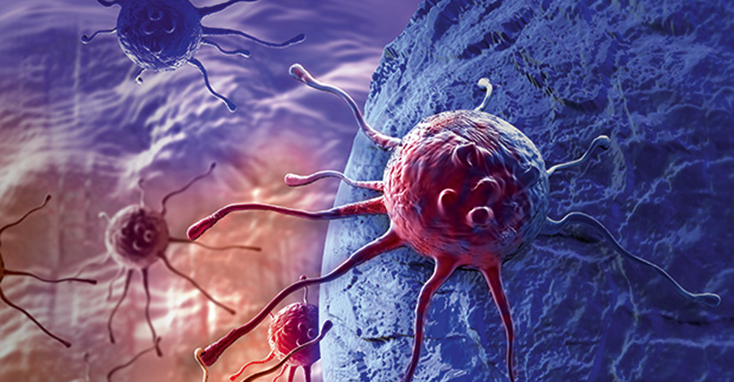Researchers have developed a blood test able to detect more than 50 types of cancer that is accurate enough to be used nationally as a multi-cancer screening test in those at higher risk of the disease, including those aged over 50 with no symptoms.
The test involves taking a sample of blood from each patient and analysing it for DNA, known as cell-free DNA (cfDNA), shed by tumours (and other cells) into the blood. Genomic sequencing is used to detect chemical changes to the DNA (methylation) that control gene expression, and a classifier developed with machine learning (artificial intelligence) uses these results to detect abnormal methylation patterns that indicate the presence of cancer.
The third and final sub-study of the Circulating Cell-free Genome Atlas (CCGA) study, published in the Annals of Oncology, investigated the performance of the test in 2,823 people already diagnosed with cancer and 1,254 people without cancer.
The findings show that the test was able to detect cancer signals from more than 50 different types of cancer across all four cancer stages (I, II, III, IV), correctly identifying when cancer was present in 51.5% of cases. The test’s specificity was 99.5%, thus showing that it wrongly detected cancer in just 0.5% of cases.
According to the data, sensitivity of the test was 67.6% overall across stages I-III in 12 pre-specified cancers that account for two-thirds of cancer deaths in the US annually (anal, bladder, bowel, oesophageal, stomach, head and neck, liver and bile duct, lung, ovarian and pancreatic cancers, lymphoma and cancers of white blood cells such as multiple myeloma), and 40.7% overall in more than 50 cancers.
For all cancers, detection improved with each later cancer stage with a sensitivity rate of 16.8% at the early stage I, 40.4% at stage II, 77% at stage III and 90.1% at stage IV.
Research also showed that sensitivity varied by type of cancer; in solid tumours that do not have any screening options – such as oesophageal, liver and pancreatic cancers – overall sensitivity of the test was twice that for solid tumours that do have screening options, such as breast, bowel, cervical and prostate cancers: 65.6% compared to 33.7%. Overall sensitivity in cancers of the blood, such as lymphoma and myeloma, was 55.1%.
The test correctly also identified the tissue in which the cancer was located in the body in 88.7% of cases, the researchers said.
“These data add to a growing body of literature that supports the use of next-generation sequencing for the detection of cell-free DNA in blood samples as a tool for earlier detection of common cancers that account for a significant number of deaths and other health problems worldwide,” said first author of the paper, Dr Eric Klein, chairman of the Glickman Urological and Kidney Institute, Cleveland Clinic, Cleveland, US.
“In addition, a screening test that requires only a simple blood draw could provide an option for communities that have poor access to medical facilities. I’m excited about the potential impact this approach will have on public health.”
Reference:
https://www.pharmatimes.com/news/blood_test_can_detect_more_than_50_types_of_cancer_1372224
The floating traffic jams off ports. The multiplying costs of moving freight. The resulting shortages of goods. All of this had seemed like an unpleasant memory confined to the COVID-19 pandemic. But no such luck!
An ocean container capacity crunch has hit global trade just as peak shipping season starts, with freight spot rates up some 30% over the past few weeks and heading higher.
The first joint Europe-wide assessment of the drivers and impact of chemical pollution by the European Environment Agency (EEA) and the European Chemicals Agency (ECHA) has concluded that, despite progress in some areas, “more work is still needed to reduce the impact of harmful substances on human health and the environment”. Key findings include:
The severe drought which has forced the Panama Canal, one of the world’s busiest trade passages, to limit daily crossings could impact global supply chains during a period of high demand.
In the early hours of March 26, the Singapore-flagged ship Dali, loaded with 5,000 containers, slammed into Baltimore’s Francis Scott Key Bridge, causing the 1.6-mile (2.5-kilometer) bridge to collapse in a matter of seconds. The Dali was departing for Colombo when the disaster struck. Initial fears were confirmed that half a dozen people lost their lives in the accident.
The pharmaceutical and biotechnology industries constantly seek innovative methods to enhance product stability, solubility, bioavailability and ease of use. Within this realm, CDMOs [Contract Development & Manufacturing Organizations] serve as invaluable partners in the development and production of high-quality drug products.
Chinese New Year 2024 is upon us, disrupting logistics from Asia starting Feb 10th. This event is expected to impact global shipping until Feb 21. Freight rates from Asia has skyrocketed with rates to the US surging by 3.5X and Europe by 6X.
Amid ongoing Red Sea diversions by shipping giants like Maersk, CMA, logistics managers are globally confronting a dual challenge of escalating ocean and air freight prices alongside cargo disruptions due to
Why will CM be the next generation on quality?
